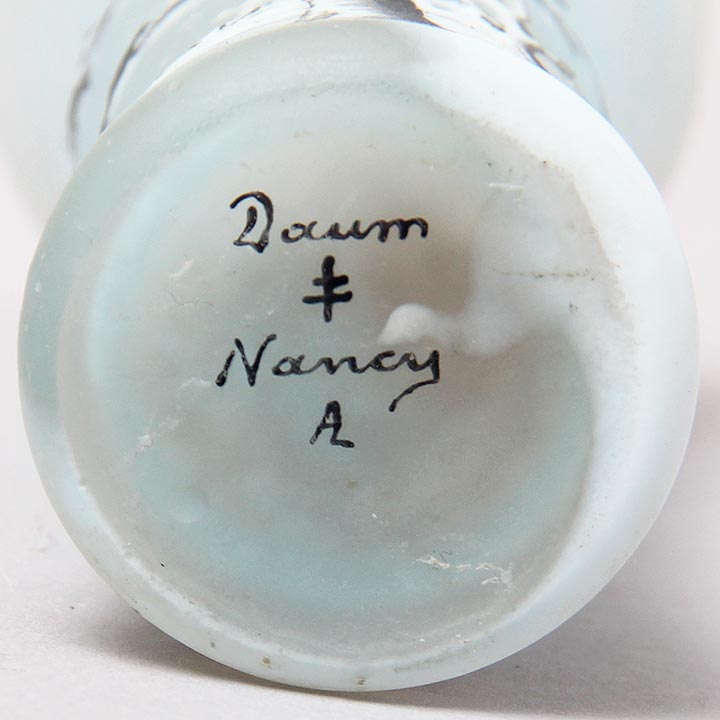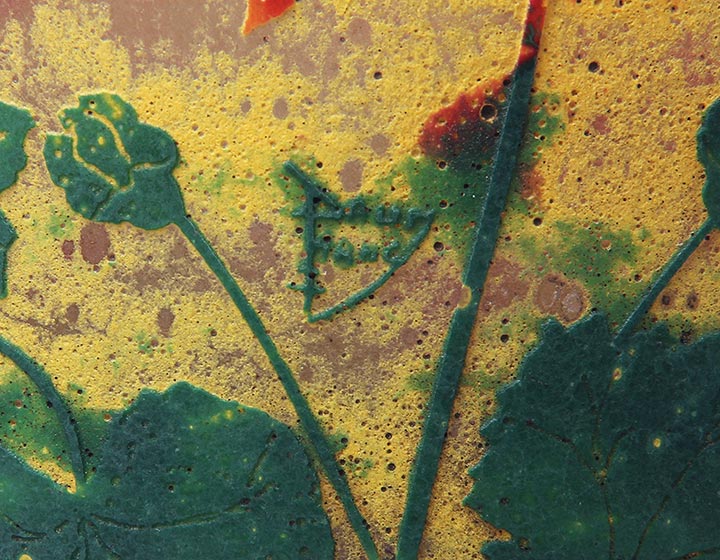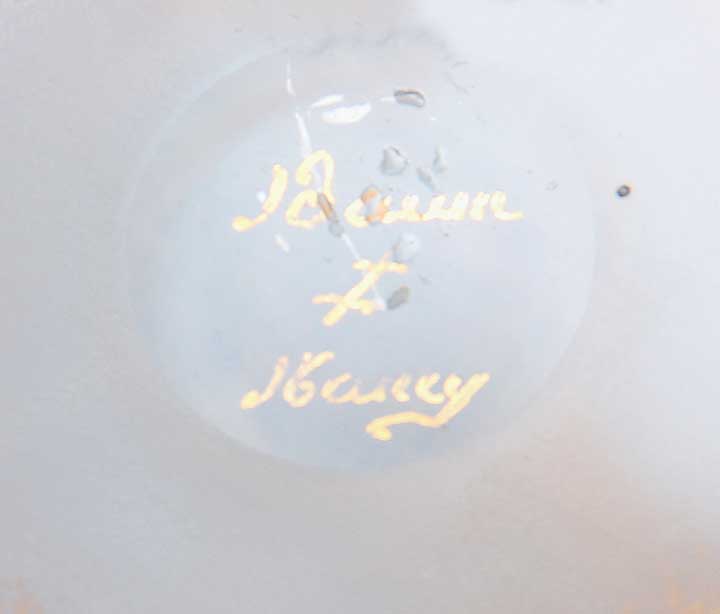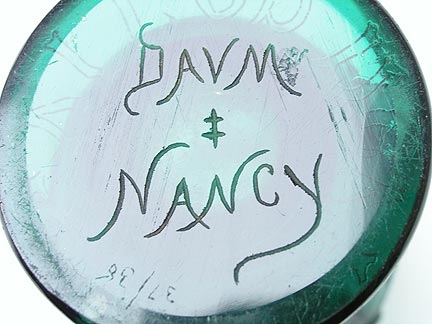There is no single, correct Daum Nancy signature. In fact, there are many different original ones. Let’s break it down. Daum was the family name of the Daum Frères (Brothers). Nancy was the name of the city where the Daum factory was located. It has nothing to do with the lady’s name Nancy. Daum always included the two bar Cross of Lorraine as part of its signature. It is the emblem of Lorraine, the eastern region of France, near the German border.

The type of signature mostly depended on the techniques that were used in making a vase. For instance if black enamel were being used on a vase that was both acid-etched and enameled, the chances were good that the signature would be found underneath, in black enamel (or whatever color the artist was using). It makes sense. The artist was working on a vase and already had a paint brush in hand with black enamel on it. After the decoration was completed and the vase signed, it went back into the kiln. The firing fixed the decoration and the signature permanently.

The example above is a black enameled Daum Nancy signature. This particular example also has the initial A of the artist. Unfortunately I don’t know of the existence of a list of decorators to be able to identify the artist. No two enameled signatures would be alike because it depended on the handwriting of the artist. Each artist has his or her own distinctive signature.
Acid-etching is the most common technique used to produce French cameo glass. It’s what makes cameo glass cameo, which is an acknowledgment of the raised nature of the decoration. A cameo signature is the way most acid-etched vases were signed.

Sometimes vases were accented with gold decoration. It was hand-painted, then followed by firing and burnishing. Again, the artist already had a gold brush in his hand, so why not use it to sign the vase? It became permanent after firing. (See the example below.)

Wheel-carving, sometimes called intaglio-carving is a technique where fine details are hand-engraved with a spinning wheel. Only the best artists were talented enough to do it. Signatures were frequently hand-engraved when a vase had been wheel-carved. Another example of using what you have.

So what we’ve learned is that the type of signature was frequently determined by expediency. Whatever brush or tool was already in hand was used to signed the work, at least most of the time. There are many other Daum Nancy signatures, but the majority of them fall into one of the categories above.
